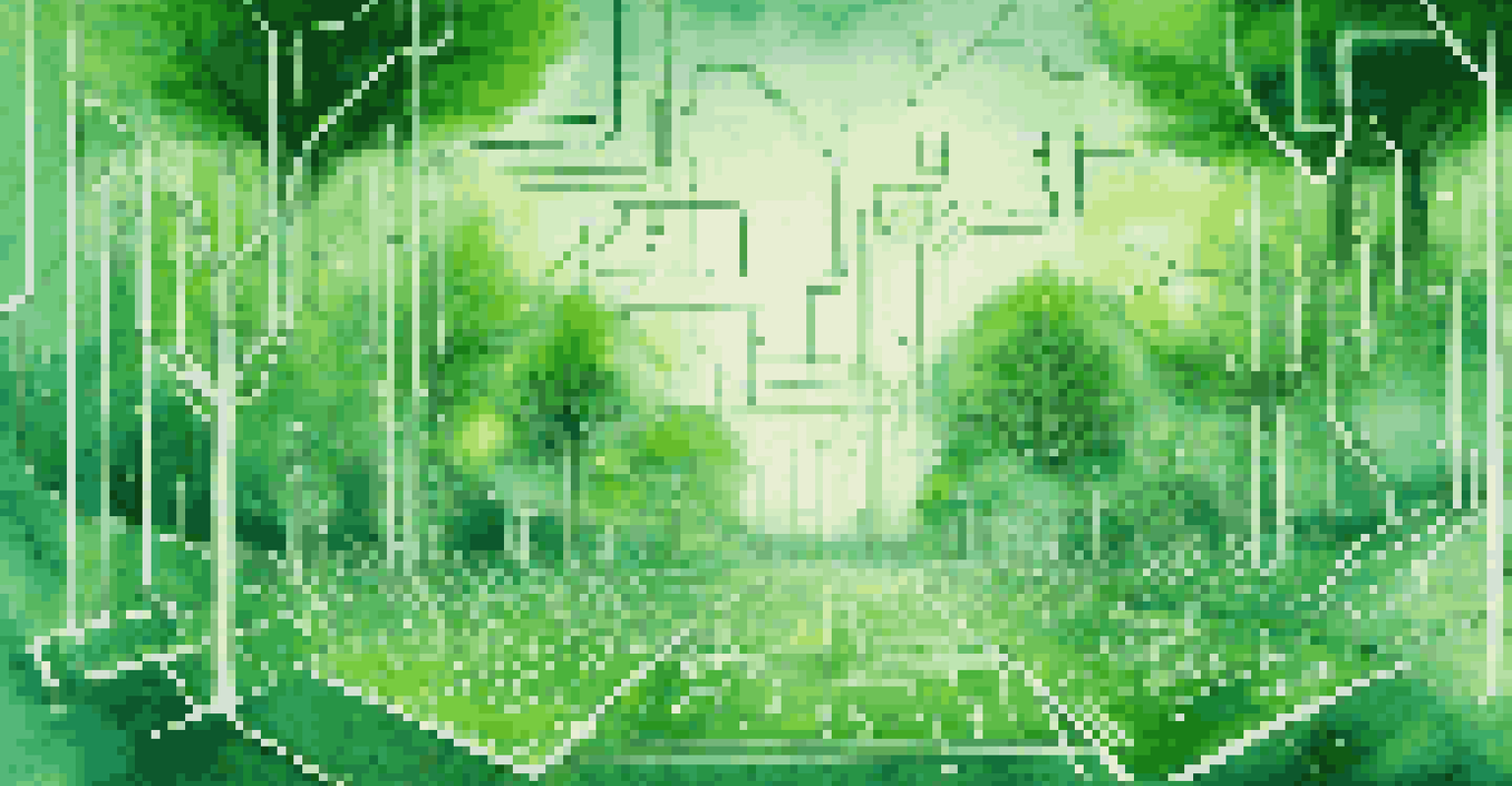User-Centric Design for Sustainable Software Solutions

Understanding User-Centric Design in Software Development
User-centric design puts the end-user at the forefront of the software development process. By focusing on the needs, preferences, and behaviors of users, developers can create solutions that not only function well but also resonate with users. This approach emphasizes empathy, encouraging designers to step into the users' shoes and understand their experiences.
Design is not just what it looks like and feels like. Design is how it works.
When software is built around real user needs, it tends to be more intuitive and easier to use. Think about how frustrating it can be when a program is cluttered or hard to navigate. A user-centric design minimizes these issues, leading to higher user satisfaction and, ultimately, better adoption rates.
Moreover, this approach can significantly reduce waste in the development process. By aligning features and functionalities with what users genuinely need, teams can avoid unnecessary iterations and revisions, leading to a more efficient workflow.
The Role of Sustainability in Software Solutions
Sustainability in software refers to creating solutions that not only serve users but also consider the environmental and social impacts. This means developing applications that are resource-efficient, energy-saving, and that promote a positive social footprint. As the digital landscape grows, the need for sustainable practices becomes increasingly vital.

For instance, sustainable software solutions can optimize server usage, reducing energy consumption and carbon emissions. By designing applications that are scalable and efficient, companies can minimize their environmental impact while still meeting user expectations.
User-Centric Design Enhances Software
Focusing on user needs leads to intuitive software that increases satisfaction and adoption rates.
Furthermore, sustainability isn't just about the environment; it also encompasses social responsibility. Software that is accessible to diverse populations ensures that everyone can benefit, creating a more inclusive digital world and fostering positive societal change.
Integrating User Needs into Sustainable Practices
To successfully merge user-centric design with sustainability, it's crucial to gather user feedback early in the development process. This can involve surveys, interviews, or user testing sessions where real-world users interact with prototypes. Their insights can guide decisions that bolster both usability and sustainability.
Sustainability is no longer about doing less harm. It's about doing more good.
For example, if users express a desire for offline capabilities, developers can create lightweight applications that require less energy and bandwidth. By prioritizing user feedback, teams can innovate solutions that are not only user-friendly but also environmentally considerate.
Incorporating user needs into sustainable practices ultimately leads to smarter, more responsible software solutions. It’s a win-win: users get the functionality they want, and the planet benefits from reduced resource consumption.
Balancing Functionality and Sustainability
One common challenge in software design is balancing functionality with sustainability. Users often desire feature-rich applications, which can sometimes lead to bloated software that consumes more resources. Striking the right balance requires thoughtful design and prioritization.
A great example of this balance is minimalistic design, which focuses on essential features while removing unnecessary elements. This not only enhances user experience by making applications easier to navigate but also reduces the amount of code and resources needed for operation.
Sustainability Benefits Software Solutions
Integrating sustainable practices in software development reduces environmental impact while enhancing user experience.
By prioritizing functionality without sacrificing sustainability, developers can create software that is both effective and environmentally responsible. This balance can lead to long-term user satisfaction and loyalty.
The Importance of Iterative Design in Sustainability
Iterative design is a process that encourages continuous refinement of software based on user feedback and performance metrics. This approach is vital for both user-centric and sustainable software development. It allows teams to adapt and improve their solutions in real-time, minimizing waste and maximizing user satisfaction.
For instance, after launching a product, developers can track user interactions and gather feedback to make necessary adjustments. This means that instead of producing a static product, the software evolves according to user needs and sustainable practices.
Embracing an iterative approach not only enhances the user experience but also aligns with sustainable goals. By continuously improving, teams can ensure that their software remains relevant and efficient, reducing the need for major overhauls that consume more resources.
Examples of User-Centric Sustainable Software
Several companies are leading the way in user-centric sustainable software solutions. For instance, platforms that prioritize energy efficiency in their coding practices not only reduce their carbon footprint but also improve their performance. These companies demonstrate that sustainability and great user experience can go hand in hand.
Another example can be found in apps promoting a circular economy, encouraging users to recycle or upcycle products. These applications not only serve a practical purpose but also engage users in sustainable practices that benefit the environment.
Iterative Design Promotes Efficiency
Continuous feedback and refinement ensure that software remains relevant and resource-efficient.
These case studies highlight the importance of integrating user needs with sustainable objectives. By showcasing successful examples, more developers and companies may be inspired to adopt similar practices.
Future Trends in User-Centric Sustainable Software Design
The future of software design is increasingly leaning towards a combination of user-centric and sustainable principles. As consumers become more eco-conscious, there will be a growing demand for software solutions that align with these values. This trend suggests that developers will need to adapt quickly to meet changing user expectations.
Emerging technologies, like AI and machine learning, can play a pivotal role in this evolution. By analyzing user behavior, these technologies can help create more personalized and efficient software that minimizes waste and maximizes satisfaction.

Looking ahead, the integration of user-centric design and sustainability will likely define the next generation of software development. The companies that embrace this shift will not only thrive but also contribute positively to the planet.